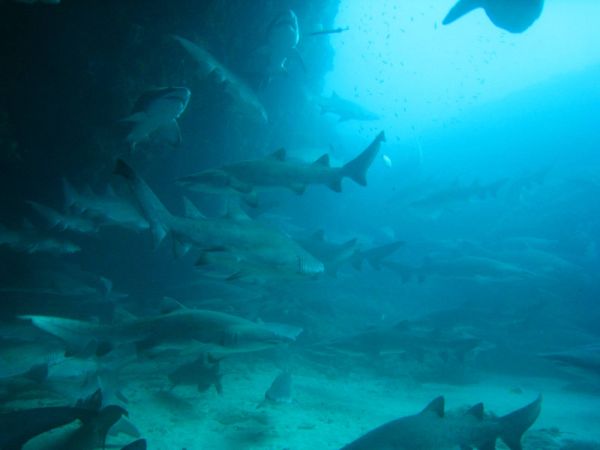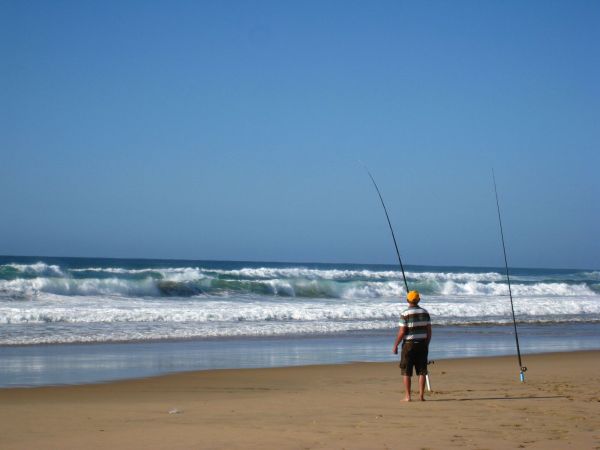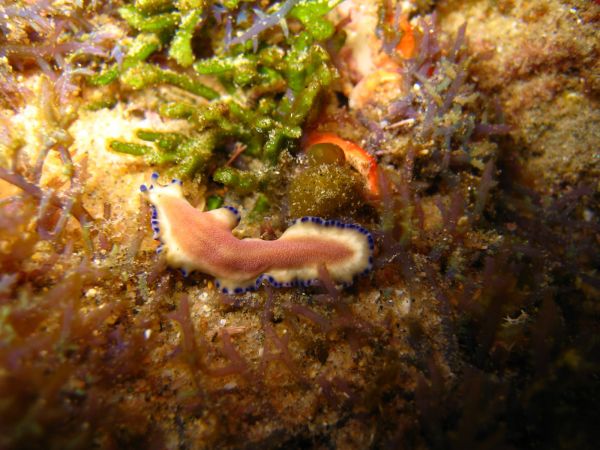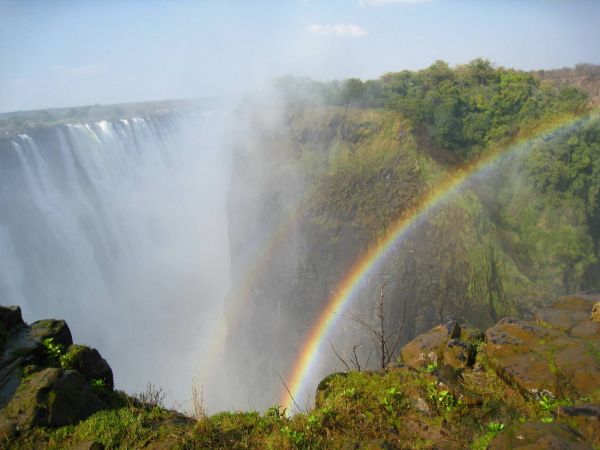We thought our submarines emotions were worn-out, that we experienced everything during our Sodwana Bay stay, a few days before. We believed it was necessary to have a change of air before dipping again the head into the water. Live a little bit with the memories and marvel at new horizons, leave the blue of the ocean for the rock of the mountain or the ochre of the savannah. We were wrong.
that takes place at Umkomass. Off this submarine-activities-oriented village, the Aliwal shoal reef. First appointment at « cathedral », a grotto whose roof collapsed and opened a natural light shaft. An azure cone which lights the most beautiful submarine sequence I've seen so far. The knees on the sandy bottom, the elbows leant on a rock. 25m deep, time isn't important any longer so much the instant is unfathomable. Shadows swirl around a marine-hued watercolour. Familiar silhouettes, so appalling and so appealing. The danger suddenly becomes insignificant. Some shapes approach, exposing their predator eyes and ill-fitted teeth.
meeting with a ragged-tooth shark.
its partners carry on wheeling, twirling. 50, 80 or 100, the figure doesn't much matter. The noise of my regulator interrupts the world of the silence and the stealth glide of these sumptuous creatures. I I soar, nitrogen- and drug-addicted, intoxicated by this fleeting heaven. However, we must take off this stone and slowly go up along the reef. My eyes don't want to look away any more. The spirit still drifts in front of the cave to continue the dream. In a continuous loop, I play again the short video stolen from the aquatic world and I plunge back into the picture of « cathedral ». I shiver again... I feel like going back so much...







We put the head into the water again for a less-fierce and more-colourful dive. The spirit still clung to the inhabitants of « cathedral ».


















To cease associating the South-African East coast with the coral reef, we dive on the Produce wreck. Crumpled metal and concretion-covered pipes define the outlines of this old ship that is lying down, 30 meters deep. A great wreck where the natives are called Brindle bass, a grouper which can weigh 400+ kilos. In the dark corners of the superstructures, we observe some motionless specimens. We go a little bit too near and the imposing mass gets moving. Close harmony with the wonderful environment of Aliwal Shoal. And for those who haven't been tempted or convinced by the submarine universe, a last series of snapshots which match these words.














































































